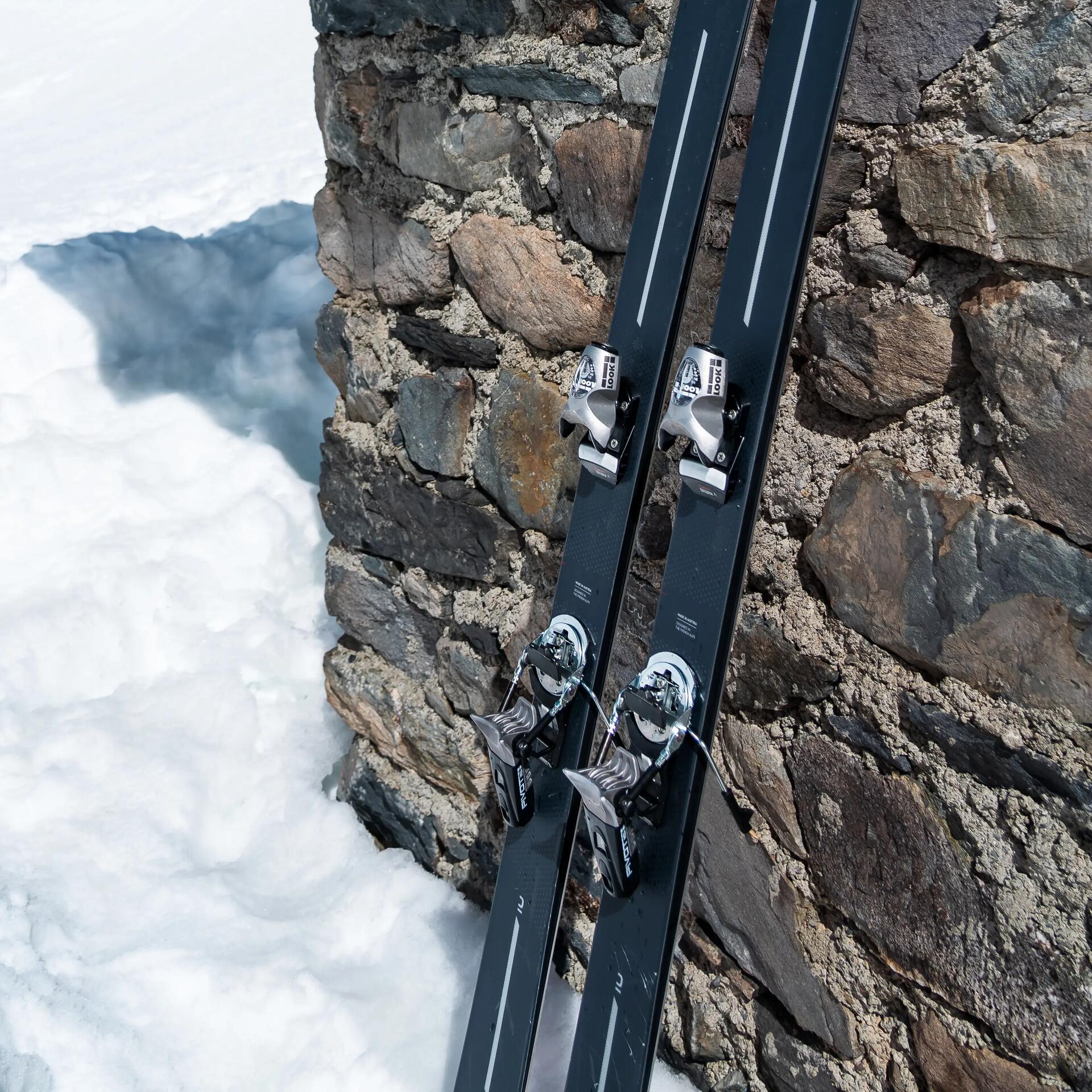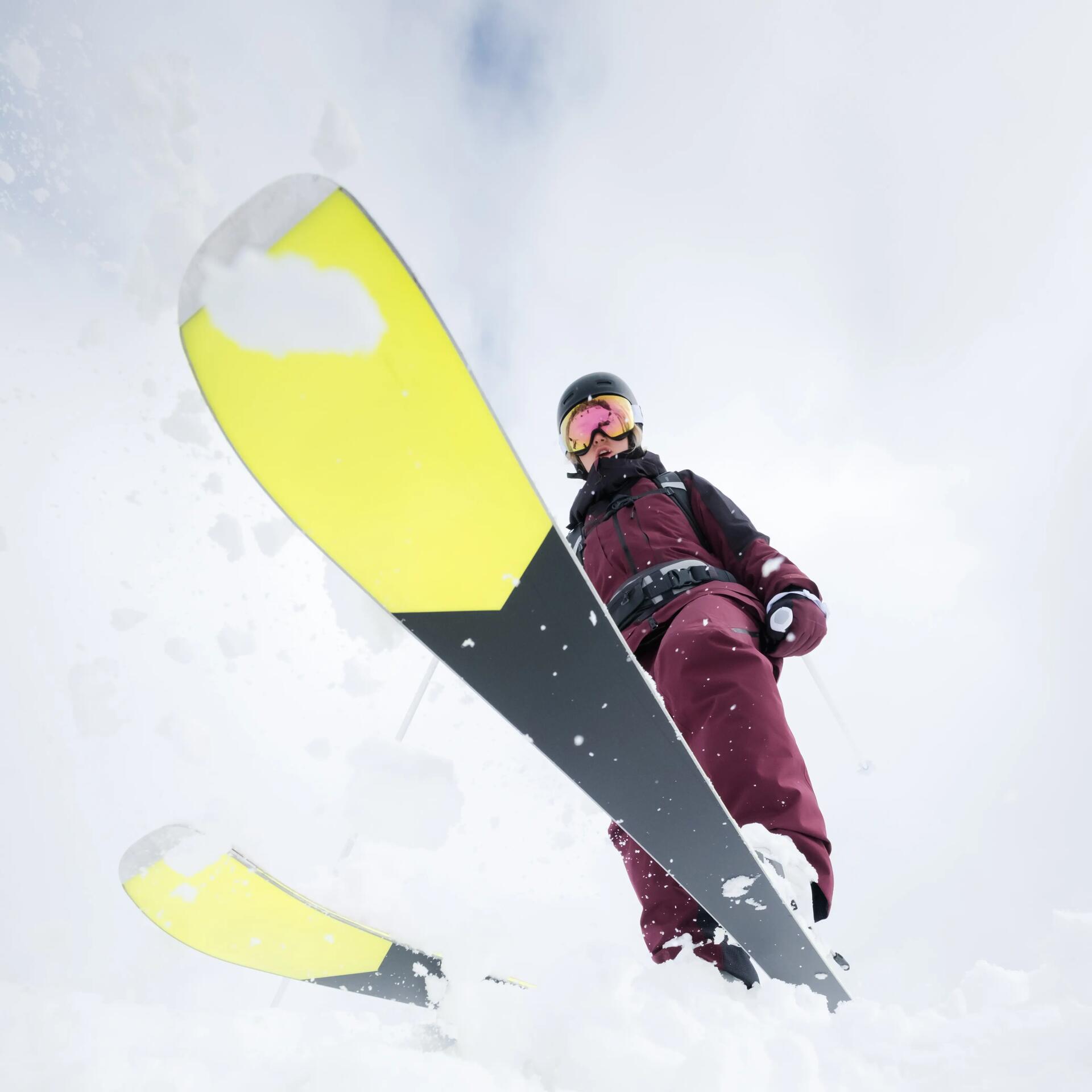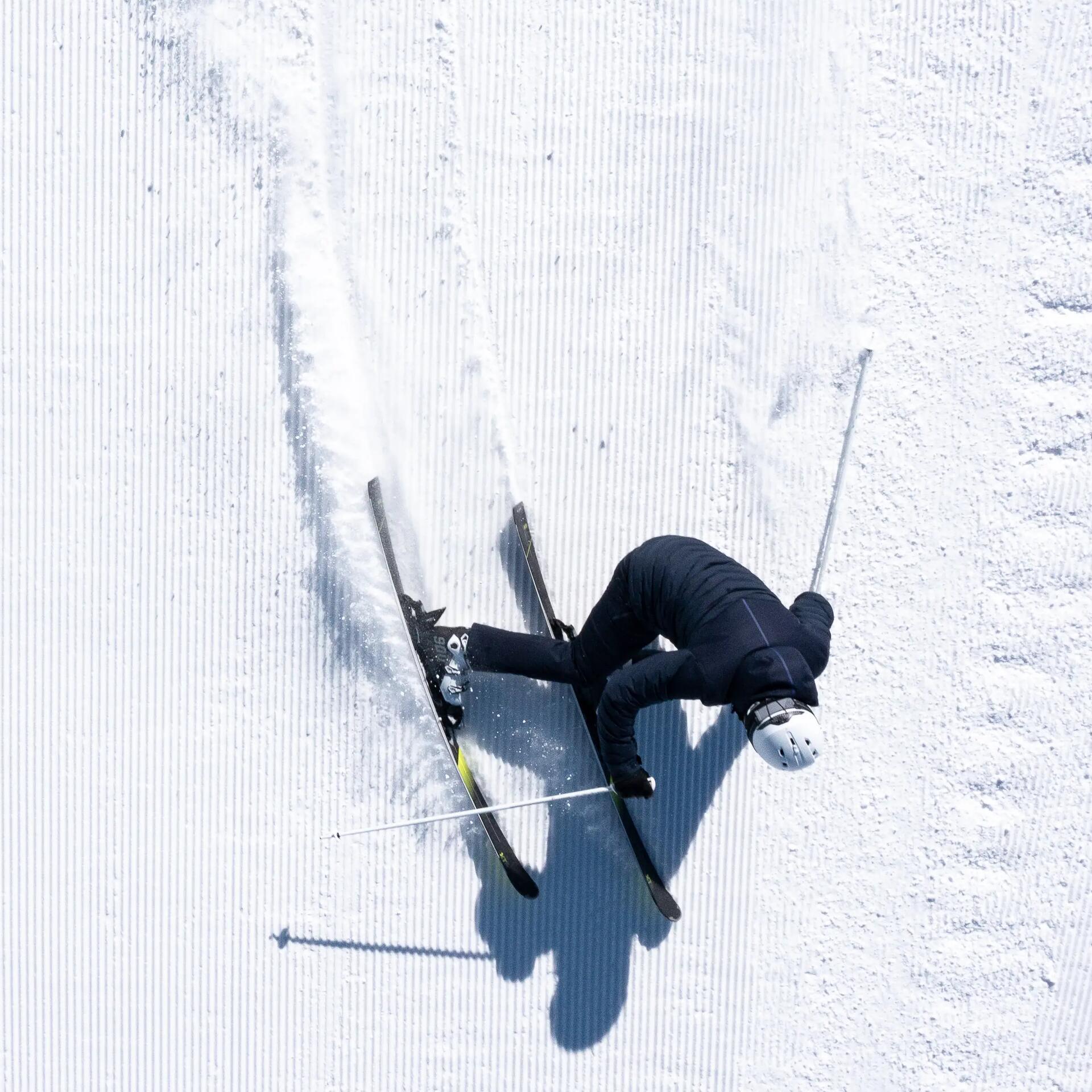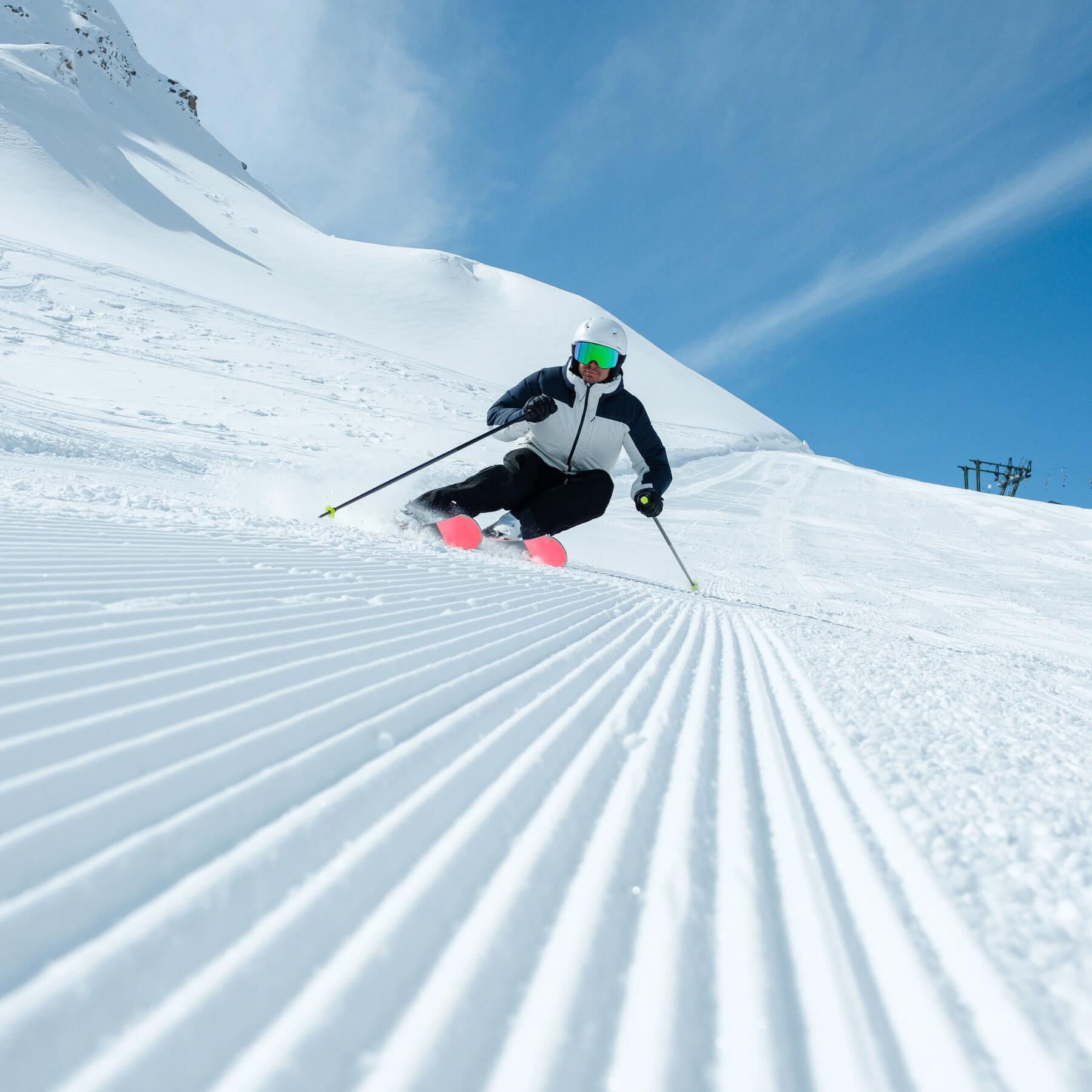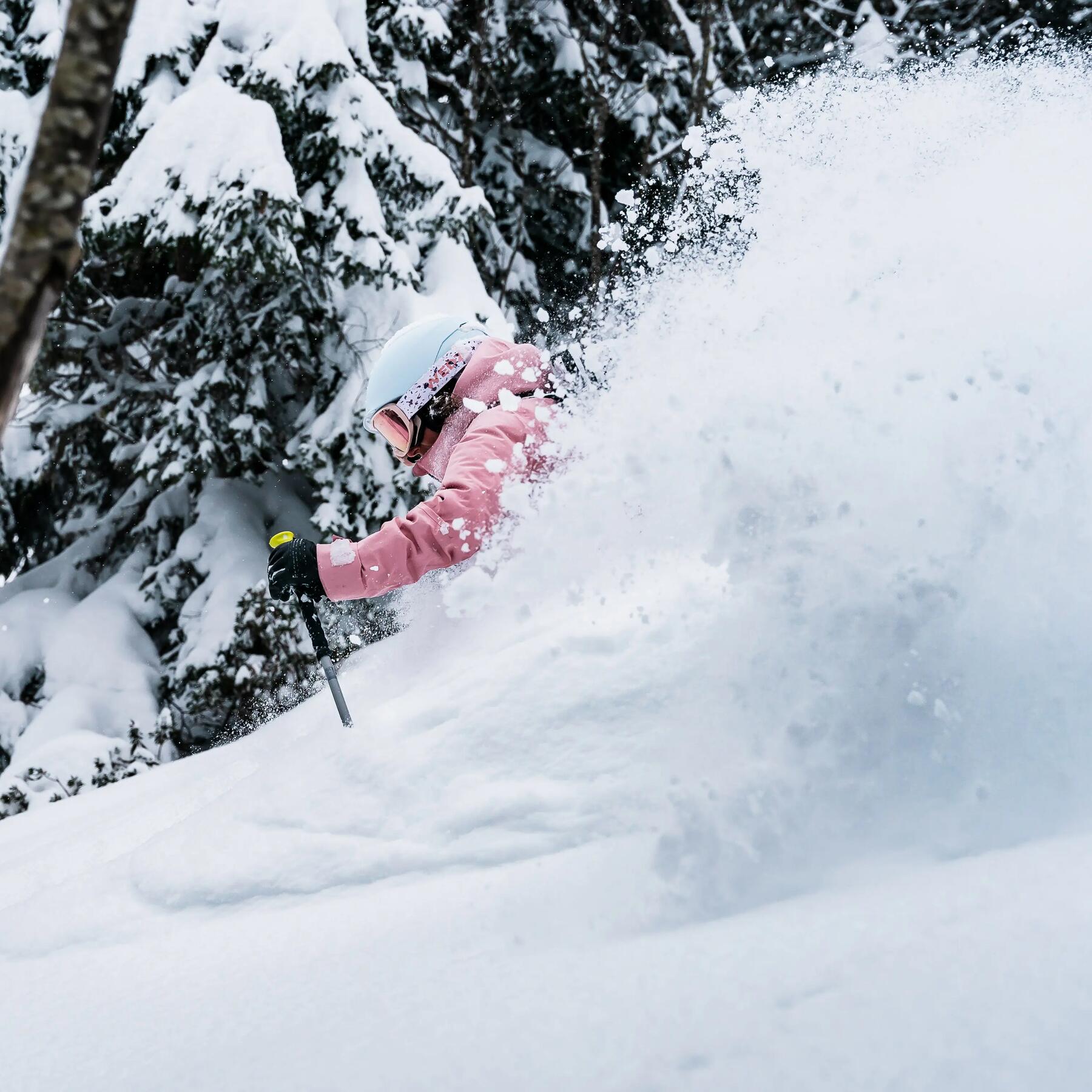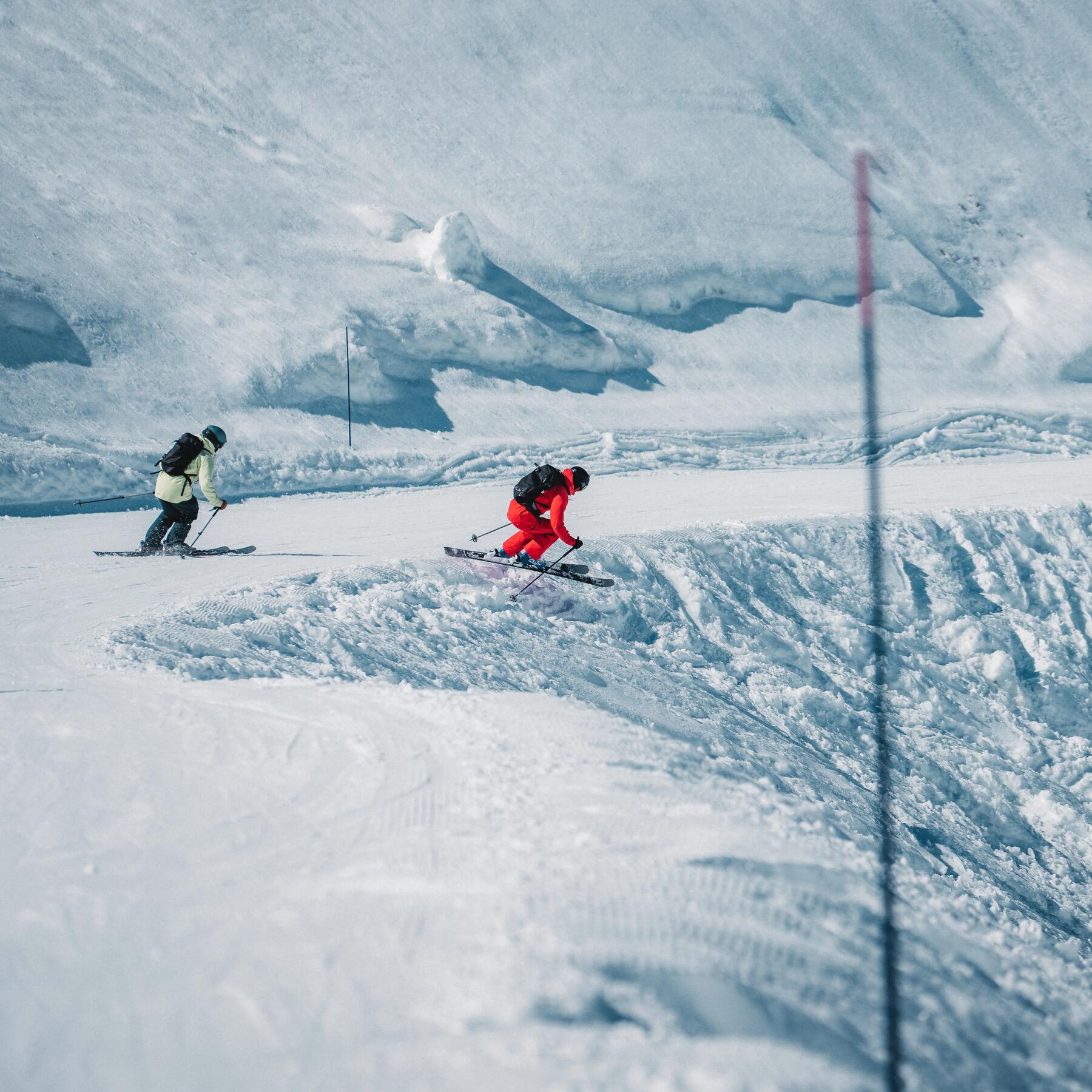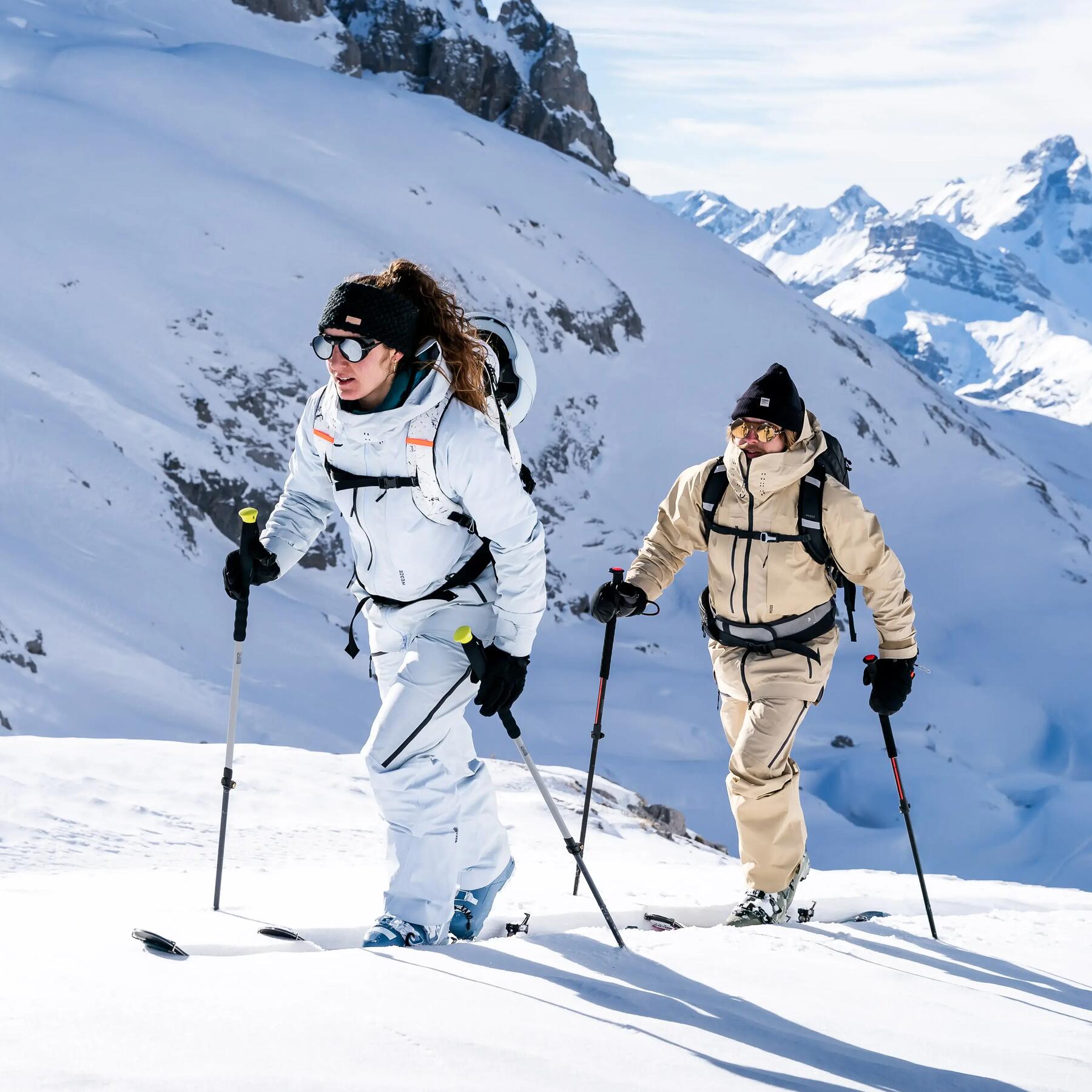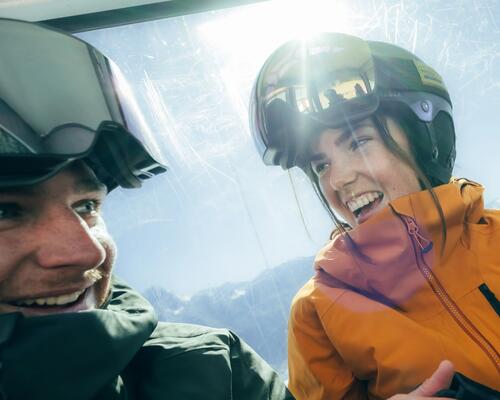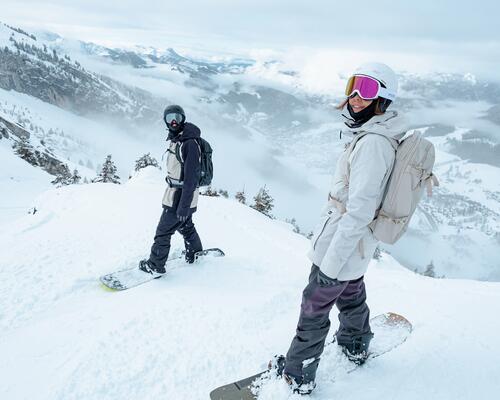How do you choose ski size, in relation to your height? To your level?
Although very long skis were what was used in the past, parabolic skis have revolutionised the skiing world: shorter than in the past, the sidecuts have been reworked to make them more manoeuvrable. Today, ski size relates more to the sports discipline and the aspirations of skiers than to their actual size (although this does obviously play a role).
It is also important to remember that your skis are what carry you on the snow: your weight will also be a factor. If you’re light, skis that are too long and therefore heavy will be more difficult to manoeuvre.
To make the right choice according to your height and level, the rule of thumb remains the same for all skis: if you’re a beginner, go for relatively short skis before choosing longer ones as you progress. To make the right choice, hold your skis up vertically, and check to what level the front tip reaches, between your chin and your eyes.
- Downhill skis: if you’re a beginner, rather choose skis that extend up to your chin; the more you progress, the closer to your eyes your skis will get.
- Freeride skis: 10 cm shorter in relation to your height for beginners, up to 5 cm longer if you’re at an advanced level.
- Freestyle skis: skis that are still shorter than yourself, between 10 cm shorter if you’re a beginner, and 5 cm shorter if you’re at expert level.
- Ski touring: 10 cm shorter if you’re a beginner, up to your full height for higher levels.
If you want to invest in equipment from your start in the sport, we advise opting for short skis that don’t only serve a specific discipline’s purpose. And if you’re the curious type, rentals are an excellent way of getting a taste for other types of skiing sports! 
